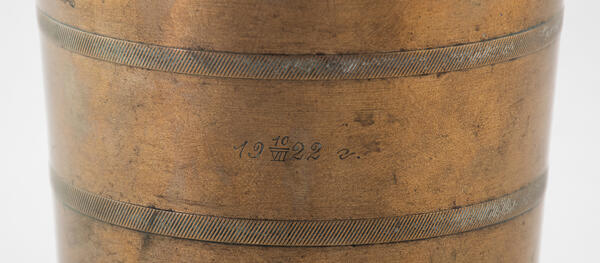Mortar and pestle are one of the oldest human tools, which were originally used for grinding grain and other food products. The word “stupa” (mortar) comes from the Old Russian word “to step”, that is, “to move one foot from place to place”. A pestle is a club made of durable material, such as metals or alloys; this one has an embossed ring in the middle part.
The very first tools were made of wood, then of rocks such as granite, later bronze and brass bowls appeared.
In the old days, a homemade mortar was not only a simple household utensil. In particular, it was believed to have healing properties: people tried to “grind” the disease away of both humans and domestic animals in a mortar, and fever was “worn out” under it. In Russian folklore, this everyday object is an attribute of Baba Yaga. She “rides in a mortar, drives with a pestle, sweeps the road ahead with a broom.”
As civilization developed, mortars with pestles began to be used in the pharmaceutical business for the preparation of powders and mixtures, and then in the chemical industry.
Modern mortars are made of various materials: hardwood, metal, such as cast iron or brass, porcelain, stone and plastic. Mortars can have different shapes and sizes — from shallow to tall, reaching more than a meter in height. The standard size of the mortar does not exceed 20 centimeters. Nowadays, a mortar and pestle are rarely used in the household, they have been replaced by electric mills and coffee grinders.
The pestle, which is featured in the collection, is made of bronze and was used in the kitchen. This alloy is quite heavy, which makes it easier to grind products.






